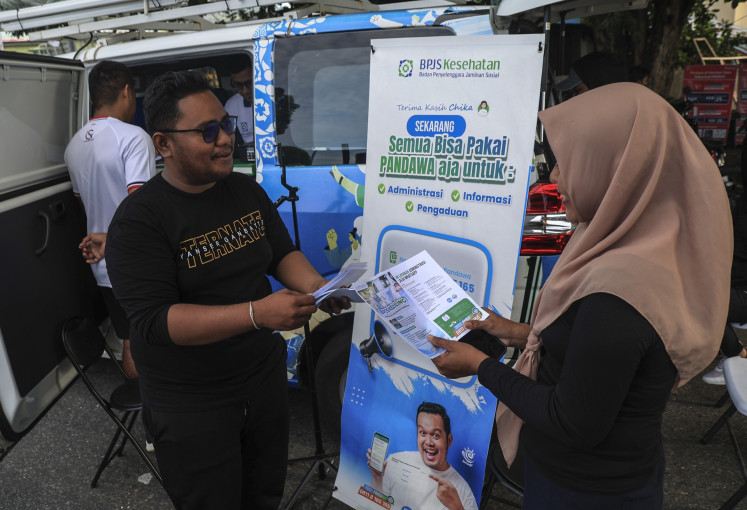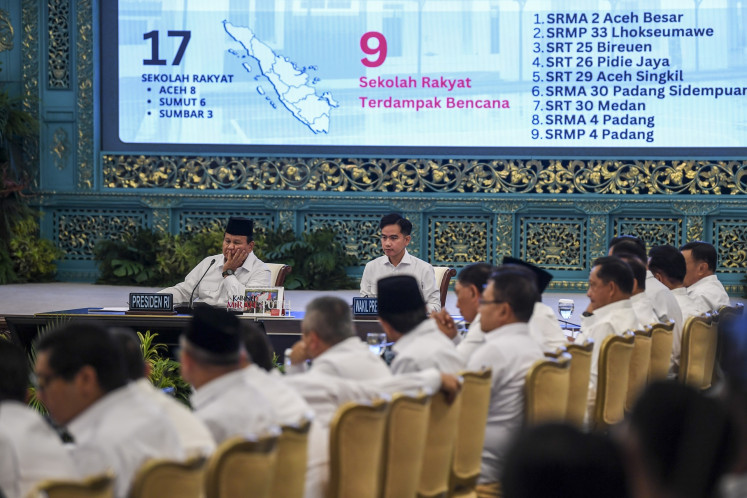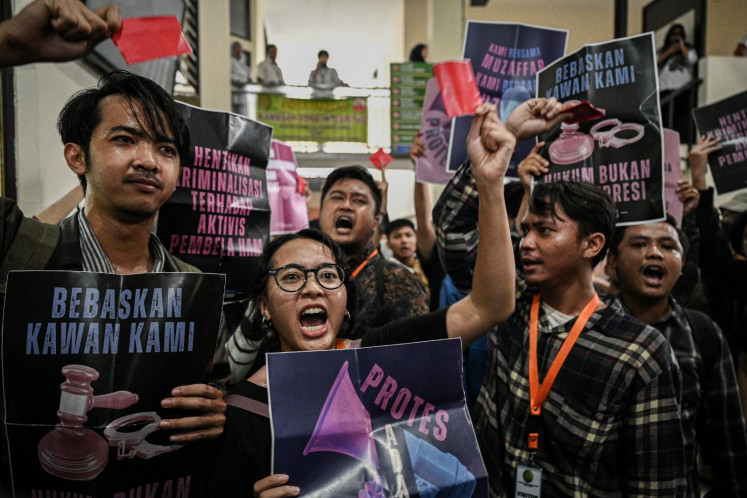Popular Reads
Top Results
Can't find what you're looking for?
View all search resultsPopular Reads
Top Results
Can't find what you're looking for?
View all search resultsThe myth of the middle-income trap
It is about time that Indonesia moves beyond the narrative of the so-called middle-income trap, by embracing bold visions paired with pragmatic strategies to write its unique, development success story.
Change text size
Gift Premium Articles
to Anyone
T
he idea of the middle-income trap has long haunted countries striving to reach high-income status. Indonesia, having recently attained upper middle-income status, is often cast as the latest protagonist in this narrative.
But this concept, while catchy, is deeply flawed. The so-called trap is neither a definitive barrier nor unique to middle-income countries. It’s a policy challenge: an opportunity to innovate policies, adapt and unlock new growth engines.
Under the leadership of President Prabowo Subianto, who took office in October, Indonesia has set an ambitious target: driving economic growth to at least 8 percent annually within the next five years. This leap from the current 5 percent range could eradicate poverty and shatter the middle-income ceiling.
But the key question remains: How can Indonesia not only spark, but also sustain, such rapid growth?
To transform ambition into reality, Indonesia must focus on both strategy and execution. Three critical directions can chart its course: outward orientation, domestic integration and growth through inclusion.
Indonesia’s outward orientation is vital for accessing global markets, acquiring advanced technologies and fostering innovation. Doubling down on exports is a proven accelerator; just ask South Korea or Vietnam. Staying competitive in this arena will require nimble trade policies and investments in high-value sectors.
Domestic integration is warranted, as regional disparities remain a drag on Indonesia’s economy. Bridging the gaps between urban and rural areas can unlock untapped potential, ensuring that all regions contribute to and benefit from growth. Strengthening logistics and regional connectivity will be key to achieving this.
Growth through inclusion starts from the premise that greater inclusion in and of itself can be an enabler of sustained growth. Indonesia could realize the gender dividend by promoting female labor force participation. It could also generate a growth impulse by having the informal sector contribute more to national growth. An industrial policy for the informal sector is long overdue.
Strategies alone do not drive development. Execution is the real challenge. Success requires the embrace of three core principles: future orientation, strategic focus and a relentless commitment to implementation.
Climate change shifts in demographics and technology and changing patterns in globalization make the development landscape of the future more challenging. Indonesia must stay agile against this changing backdrop, anticipating disruptions and adjusting strategies to remain resilient. Future orientation is therefore key.
Technocratic laundry lists of policy solutions are outdated and dilute impact. Success will lie in prioritizing a few transformative initiatives in the form of strategic big bets. This helps align resources and efforts more sharply with national goals and increases the likelihood of success.
Consistent and continuous implementation is critical. Most attention should be devoted to this department, which requires strengthening institutional capacity for executing and monitoring policies, as well as independent reviews to assess the progress being made.
It’s time to retire the myth of the middle-income trap. The real challenge lies in adaptability, focus and follow-through.
Asia offers no shortage of inspiration. Singapore, under Lee Kuan Yew, and China, guided by Deng Xiaoping, achieved remarkable growth through bold visions paired with pragmatic strategies. Indonesia can emulate these successes by adapting them to its unique context and aspirations.
Critics may call Indonesia’s vision of zero poverty and 8 percent growth unrealistic. But history is built by bold leaps, not timid steps. As Stewart Brand once said, “This present moment used to be the unimaginable future.”
With clear priorities, strategic discipline and unwavering commitment, Indonesia is poised to defy the odds and rewrite its development story.
---
Norimasa Shimomura is UNDP Indonesia Resident Representative. Philip Schellekens is UNDP Chief Economist for Asia and the Pacific. The views expressed are personal.











